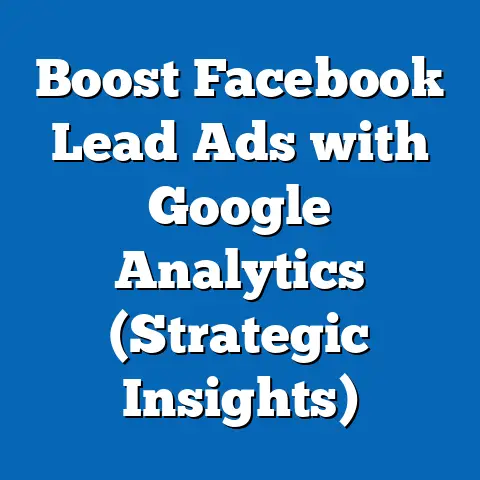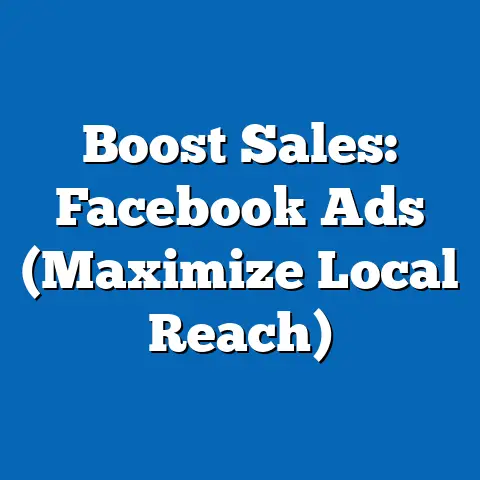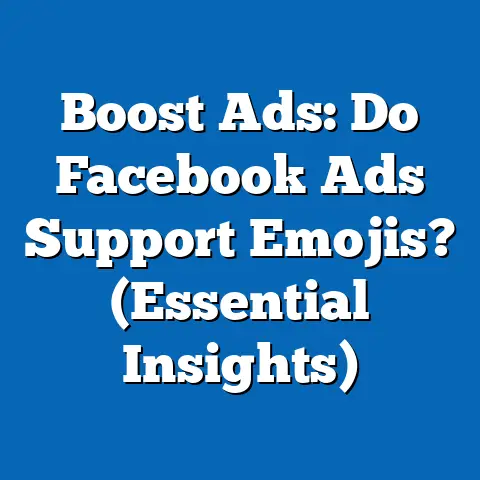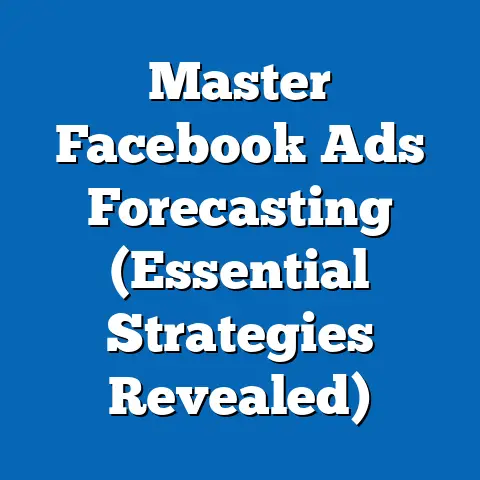Unlock Geofencing in Facebook Ads (Proven Strategies)
Unlock Geofencing in Facebook Ads: Proven Strategies to Maximize Your Reach
Have you ever wondered how some businesses seem to know exactly when you’re near their store, popping up with enticing offers just as you’re considering your options? It’s not magic, my friends; it’s the power of geofencing.
In today’s digital marketing landscape, where personalization and relevance are king, geofencing offers an incredibly powerful tool. It allows you to target potential customers with laser precision, delivering ads to them based on their real-time location. This isn’t just about reaching people; it’s about reaching them at the right time and place, significantly boosting engagement and conversion rates.
I’ve seen firsthand how geofencing can transform a local business’s marketing efforts. From driving foot traffic to promoting location-specific events, the possibilities are vast. In this guide, I’m going to walk you through everything you need to know to unlock the potential of geofencing in your Facebook Ads strategy.
Understanding Geofencing
What is Geofencing?
At its core, geofencing is a location-based service that allows businesses to set up virtual boundaries around specific geographic areas. Think of it as drawing a digital fence on a map. When a user with a mobile device enters or exits this “fence,” their device triggers an action, such as receiving a notification, seeing an ad, or checking-in on social media.
In the context of Facebook Ads, geofencing enables you to show ads to people who are currently within a defined area. This could be around your store, a competitor’s location, a local event, or any other place where your target audience is likely to be.
The Technology Behind the Fence
Geofencing relies on a combination of technologies to pinpoint a user’s location:
- GPS (Global Positioning System): This is the most common method, using satellite signals to determine a device’s precise coordinates.
- Wi-Fi: By triangulating the signals from nearby Wi-Fi networks, geofencing can estimate location, especially indoors where GPS signals may be weak.
- Cellular Data: Mobile network towers can also provide location information, although it’s generally less accurate than GPS or Wi-Fi.
- RFID (Radio-Frequency Identification) & Bluetooth Beacons: These technologies use radio waves and Bluetooth signals to communicate between a device and a nearby beacon. This is often used in-store for highly localized targeting.
Facebook primarily uses GPS and Wi-Fi data for geofencing, leveraging the vast location data it collects from users who have location services enabled.
Real-World Examples of Geofencing Success
To truly grasp the power of geofencing, let’s look at a few examples:
- Retail Stores: A clothing store might send a push notification to customers who are near a competitor’s store, offering a discount to entice them to visit instead.
- Restaurants: A restaurant could target people attending a local festival with ads promoting their special event menu and convenient location.
- Event Promoters: Concert venues can use geofencing to target attendees with ads for merchandise, upcoming shows, or drink specials.
- Real Estate: Real estate agencies can target people attending open houses or visiting neighborhoods with ads showcasing available properties.
I remember working with a local coffee shop that was struggling to compete with a larger chain across the street. By setting up a geofence around the competitor’s location and offering a “first coffee free” promotion, they saw a significant increase in foot traffic and new customers.
Key Takeaway: Geofencing is a powerful tool that allows you to target potential customers based on their real-time location. Understanding the technology behind it and seeing real-world examples can help you brainstorm creative ways to implement it in your own campaigns.
Benefits of Geofencing in Facebook Ads
Increased Relevance: Hitting the Right People at the Right Time
The beauty of geofencing lies in its ability to deliver hyper-relevant ads. Think about it: someone walking past your bakery is far more likely to be interested in a pastry promotion than someone browsing Facebook from miles away. By targeting users based on their location, you’re ensuring that your ads reach people who are most likely to be interested in your products or services.
I’ve found that relevance is the key to breaking through the noise of social media. People are bombarded with ads every day, but they’re far more likely to pay attention to something that’s directly relevant to their current situation.
Higher Engagement Rates: Capturing Attention in the Moment
When your ads are relevant, engagement naturally follows. People are more likely to click, like, share, and comment on ads that resonate with their current needs and interests. This increased engagement translates into higher click-through rates (CTR), lower cost-per-click (CPC), and ultimately, a better return on investment (ROI).
I’ve seen campaigns where simply adding a location-based element to the ad copy, such as “Just around the corner!”, can significantly boost engagement rates. It’s all about making the ad feel personal and relevant to the user’s immediate surroundings.
Enhanced Customer Experience: Personalized Offers and Recommendations
Geofencing allows you to create highly personalized experiences for your customers. By knowing their location, you can tailor your ads to their specific needs and preferences. For example, you could offer a special discount to first-time visitors, or promote a specific product that’s popular in their area.
I once worked with a clothing retailer that used geofencing to promote different product lines based on the weather in a particular location. If it was raining, they would show ads for umbrellas and raincoats. If it was sunny, they would promote sunglasses and swimwear. This level of personalization created a truly exceptional customer experience.
Data-Driven Results: The Proof is in the Numbers
The benefits of geofencing aren’t just anecdotal; they’re backed by data. Studies have shown that location-based advertising can significantly increase brand awareness, drive foot traffic, and boost sales. For example, a 2023 study by the Location Based Marketing Association found that geofencing campaigns had an average CTR that was twice as high as traditional online advertising.
Key Takeaway: Geofencing offers a trifecta of benefits: increased relevance, higher engagement, and enhanced customer experience. These benefits translate into tangible results, making geofencing a valuable tool for any business looking to boost its marketing ROI.
Don’t worry; it’s not as complicated as it might seem!Step-by-Step Guide to Geofencing in Ads Manager
-
Create a New Campaign: Start by creating a new campaign in Facebook Ads Manager. Choose your campaign objective based on your goals, such as “Traffic,” “Engagement,” or “Conversions.”
-
Define Your Audience: This is where the magic happens. In the “Audience” section, you’ll find the “Location” targeting options.
-
Target Specific Locations: You have several options here:
- Countries, Regions, or Cities: You can target entire geographic areas.
- Addresses: You can enter a specific address and set a radius around it. This is perfect for targeting your store or a competitor’s location.
- Drop a Pin: You can manually drop a pin on a map and define a radius around that point. This is useful for targeting specific events or areas that don’t have a defined address.
-
Set Your Radius: The radius determines the size of your geofence. You can set it from as small as 1 mile (1.6 kilometers) up to 50 miles (80 kilometers). Keep in mind that smaller radiuses are more precise but may limit your reach.
-
Refine Your Audience (Optional): You can further refine your audience by adding demographic, interest, and behavioral targeting options. This ensures that your ads reach the right people within your geofence.
-
Create Compelling Ad Content: Your ad copy and visuals should be tailored to the local audience. Use language and imagery that resonates with people in that specific area. Highlight local events, landmarks, or cultural references.
-
Set Your Budget and Schedule: Choose your budget and schedule based on your goals and target audience. Consider running your ads during peak hours when people are most likely to be in the targeted area.
-
Monitor and Adjust: Once your campaign is live, keep a close eye on your performance metrics. Monitor your CTR, CPC, and conversion rates. Adjust your geofences, ad copy, or targeting options as needed to optimize your results.
Create a New Campaign: Start by creating a new campaign in Facebook Ads Manager. Choose your campaign objective based on your goals, such as “Traffic,” “Engagement,” or “Conversions.”
Define Your Audience: This is where the magic happens. In the “Audience” section, you’ll find the “Location” targeting options.
Target Specific Locations: You have several options here:
- Countries, Regions, or Cities: You can target entire geographic areas.
- Addresses: You can enter a specific address and set a radius around it. This is perfect for targeting your store or a competitor’s location.
- Drop a Pin: You can manually drop a pin on a map and define a radius around that point. This is useful for targeting specific events or areas that don’t have a defined address.
Set Your Radius: The radius determines the size of your geofence. You can set it from as small as 1 mile (1.6 kilometers) up to 50 miles (80 kilometers). Keep in mind that smaller radiuses are more precise but may limit your reach.
Refine Your Audience (Optional): You can further refine your audience by adding demographic, interest, and behavioral targeting options. This ensures that your ads reach the right people within your geofence.
Create Compelling Ad Content: Your ad copy and visuals should be tailored to the local audience. Use language and imagery that resonates with people in that specific area. Highlight local events, landmarks, or cultural references.
Set Your Budget and Schedule: Choose your budget and schedule based on your goals and target audience. Consider running your ads during peak hours when people are most likely to be in the targeted area.
Monitor and Adjust: Once your campaign is live, keep a close eye on your performance metrics. Monitor your CTR, CPC, and conversion rates. Adjust your geofences, ad copy, or targeting options as needed to optimize your results.
Creating Compelling Ad Content for a Local Audience
Remember, your ad content is just as important as your geofencing setup. Here are a few tips for creating ads that resonate with a local audience:
- Use Local Language: Incorporate local slang, phrases, or references into your ad copy.
- Highlight Local Events: Promote events that are happening in the targeted area.
- Showcase Local Landmarks: Use images or videos of local landmarks in your ads.
- Offer Location-Specific Deals: Create promotions that are only available to people in the targeted area.
- Test Different Ad Formats: Experiment with different ad formats, such as image ads, video ads, or carousel ads, to see what works best for your audience.
I’ve found that using user-generated content (UGC), such as photos or videos taken by local customers, can be incredibly effective in building trust and credibility.
Key Takeaway: Setting up geofencing in Facebook Ads Manager is a straightforward process. By carefully defining your geofences, creating compelling ad content, and monitoring your performance, you can create highly effective location-based campaigns.
Proven Strategies for Effective Geofencing
Now that you know how to set up geofencing, let’s explore some proven strategies for maximizing its effectiveness. These are the secrets I’ve learned from years of experience working with businesses of all sizes.
Timing is Everything: When to Run Your Geofencing Ads
The timing of your geofencing ads can have a significant impact on their performance. Consider these factors when planning your schedule:
- Peak Hours: Run your ads during the hours when your target audience is most likely to be in the targeted area. For example, if you’re targeting commuters, run your ads during rush hour.
- Local Events: Promote your business during local events, such as festivals, concerts, or sporting events.
- Holidays: Take advantage of holidays to offer special promotions or discounts.
- Weather: Adjust your ad content based on the weather in the targeted area. As I mentioned earlier, you could promote umbrellas on rainy days and sunglasses on sunny days.
I’ve found that running A/B tests with different ad schedules can help you identify the optimal timing for your campaigns.
Crafting Tailored Messages: Speaking Directly to Your Local Consumer
Your ad messaging should be tailored to the specific needs and interests of the local consumer. Here are a few tips for crafting compelling ad copy:
- Use Local Language: As I mentioned earlier, incorporate local slang, phrases, or references into your ad copy.
- Highlight Local Benefits: Focus on the benefits of your product or service that are most relevant to the local community.
- Address Local Concerns: Acknowledge and address any concerns that people in the targeted area may have.
- Tell a Local Story: Share stories about your business or your customers that resonate with the local community.
I once worked with a local brewery that created a series of ads featuring stories about local residents who were passionate about their beer. These ads were incredibly effective in building brand loyalty and driving sales.
Integrating Geofencing with Other Marketing Efforts
Geofencing doesn’t have to be a standalone strategy. It can be even more effective when integrated with other marketing efforts. Here are a few ideas:
- Social Media: Use geofencing to promote your social media accounts to people in the targeted area.
- Email Marketing: Send targeted emails to customers who have visited your store or attended a local event.
- SMS Marketing: Send text messages to customers who are near your store, offering special promotions or discounts.
- In-Store Promotions: Use geofencing to drive foot traffic to your store and then offer special in-store promotions to customers who have seen your ads.
Key Takeaway: Effective geofencing requires careful planning, strategic timing, tailored messaging, and integration with other marketing efforts. By following these proven strategies, you can maximize the impact of your location-based campaigns.
Challenges and Solutions in Geofencing
While geofencing offers incredible potential, it’s not without its challenges. Here are some common issues that marketers face and how to overcome them:
Privacy Concerns: Respecting User Data and Preferences
One of the biggest challenges in geofencing is addressing privacy concerns. People are increasingly aware of how their location data is being used, and they’re more likely to opt-out of location services if they feel like their privacy is being violated.
Here are a few tips for respecting user privacy:
- Be Transparent: Clearly explain how you’re using location data in your privacy policy and ad copy.
- Obtain Consent: Only target users who have explicitly opted-in to location services.
- Provide Opt-Out Options: Make it easy for users to opt-out of location-based advertising.
- Anonymize Data: Use anonymized location data whenever possible to protect user privacy.
I always advise my clients to prioritize transparency and user consent. Building trust with your customers is essential for long-term success.
Technical Issues: Ensuring Accuracy and Reliability
Geofencing relies on accurate location data, but GPS and Wi-Fi signals can be unreliable in certain areas, especially indoors or in densely populated urban environments.
Here are a few tips for ensuring accuracy and reliability:
- Use Multiple Technologies: Combine GPS, Wi-Fi, and cellular data to improve location accuracy.
- Test Your Geofences: Walk around your targeted area with your mobile device to ensure that your geofences are working as expected.
- Monitor Location Data: Keep a close eye on your location data to identify any inaccuracies or inconsistencies.
- Adjust Your Radiuses: Adjust your radiuses as needed to compensate for any inaccuracies in location data.
Ad Fatigue: Keeping Your Ads Fresh and Engaging
People can quickly become tired of seeing the same ads over and over again. This is especially true with geofencing, where you’re targeting a relatively small audience.
Here are a few tips for preventing ad fatigue:
- Rotate Your Ads: Regularly rotate your ad copy, visuals, and offers to keep things fresh.
- Target Different Segments: Segment your audience and create different ads for each segment.
- Use Dynamic Ads: Use dynamic ads to personalize your ad content based on user behavior and preferences.
- Pause Your Campaigns: Take breaks from your geofencing campaigns to give your audience a rest.
Key Takeaway: Overcoming the challenges of geofencing requires a proactive approach to privacy, accuracy, and ad fatigue. By following these tips, you can ensure that your location-based campaigns are both effective and respectful of user privacy.
Future Trends in Geofencing and Facebook Ads
The world of geofencing is constantly evolving, and there are several exciting trends on the horizon. Here’s a glimpse into the future:
AI-Driven Geofencing: Smarter Targeting and Personalization
Artificial intelligence (AI) is poised to revolutionize geofencing. AI algorithms can analyze vast amounts of data to identify patterns and predict user behavior, allowing for smarter targeting and personalization.
For example, AI could be used to:
- Predict When Users Are Most Likely to Visit Your Store: Target users with ads just before they’re about to enter your geofence.
- Personalize Ad Content Based on User Preferences: Show users ads for products or services that they’re most likely to be interested in.
- Optimize Geofences in Real-Time: Automatically adjust your radiuses based on user behavior and performance data.
Augmented Reality (AR) Experiences: Blending the Physical and Digital Worlds
Augmented reality (AR) is another exciting trend that’s poised to transform geofencing. AR allows you to overlay digital content onto the real world, creating immersive and engaging experiences for users.
For example, you could use AR to:
- Create Interactive Games: Encourage users to visit your store by creating an AR game that they can play in the targeted area.
- Offer Virtual Tours: Give users a virtual tour of your store or facility using AR.
- Provide Real-Time Information: Show users real-time information about your products or services using AR.
Integration with Other Platforms: A Seamless Customer Journey
In the future, geofencing will be seamlessly integrated with other platforms, such as e-commerce websites, mobile apps, and customer relationship management (CRM) systems. This will allow you to create a more seamless and personalized customer journey.
For example, you could:
- Track Users Who Have Seen Your Ads: Track users who have seen your geofencing ads and then visited your website or store.
- Personalize Email Marketing Based on Location: Send targeted emails to customers based on their location and past behavior.
- Offer Loyalty Rewards to Local Customers: Reward local customers for their loyalty with special promotions and discounts.
Key Takeaway: The future of geofencing is bright, with AI, AR, and platform integration poised to transform the way businesses target and engage with customers. By staying ahead of these trends, you can unlock new opportunities for growth and innovation.
Conclusion
Geofencing in Facebook Ads is more than just a marketing tactic; it’s a powerful tool for building deeper connections with your customers. By delivering relevant, timely, and personalized ads based on location, you can create exceptional experiences that drive engagement, loyalty, and ultimately, sales.
I’ve seen firsthand how geofencing can transform a business’s marketing efforts, from driving foot traffic to promoting local events. But remember, success requires careful planning, strategic timing, tailored messaging, and a commitment to respecting user privacy.
So, what are you waiting for? It’s time to unlock the potential of geofencing in your Facebook Ads strategy. Experiment with different geofences, ad copy, and targeting options. Track your results, learn from your mistakes, and adapt your approach as needed.
The world of location-based marketing is constantly evolving, and the opportunities are endless. By embracing innovation and staying ahead of the curve, you can unlock new opportunities for growth and success.






